
Samsung has always been well-known for their S and Note series flagships. Out of the spotlight, however, is its A series devices. Targeted more for mid-range and entry-level enthusiasts, they do offer value and performance to its customers.
One of the newest entries in the A lineup is the Samsung Galaxy A71. Priced at PhP 22,290, it’s positioned near the higher-end of the mid-range market. Despite that, the smartphone comes with touches of a flagship device.
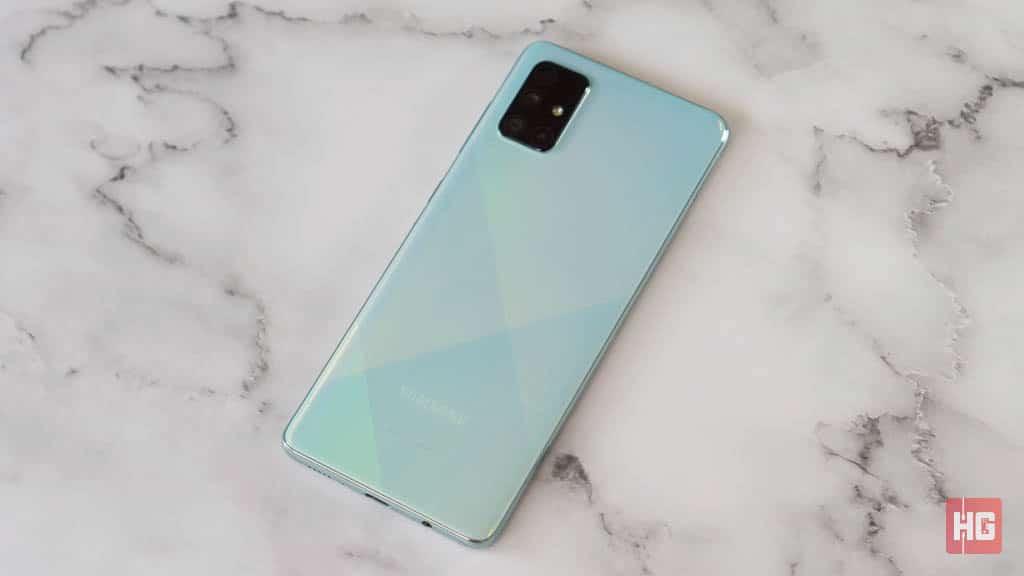
| Chipset | Qualcomm Snapdragon 730G |
| Screen | 6.7-inch Infinity-O, Super AMOLED Plus, 2400 x 1080, Corning Gorilla Glass 3 |
| RAM | 8GB |
| OS | Android 10, One UI 2 |
| Rear Camera | 64MP f/1.8 Main, 12MP f/2.2 Ultrawide, 5MP f/2.2 Depth, 5MP f/2.4 Macro |
| Front Camera | 32MP f/2.2 |
| Storage | 128GB expandable up to 512GB via MicroSD slot |
| Network | Dual-SIM, 4G LTE |
| Connectivity | WiFi 802.11ac, Dual-Band WiFi, Bluetooth 5.0, USB Type-C |
| Battery | 4,500mAh, 25W Fast Charging |
| Others | In-display Fingerprint Scanner, Dolby Atmos, Game Booster, Bixby |
| Colors | Prism Crush Black, Prism Crush Blue, Prism Crush Silver |

The Samsung Galaxy A71 ships in a white box with its picture and moniker embossed on the front. The smartphone ships out with a complete set of accessories which include a SIM tray ejector pin, documentation, a silicone case, a pair of earphones, a USB Type-C cable, and a 25W Fast Charging wall adapter.
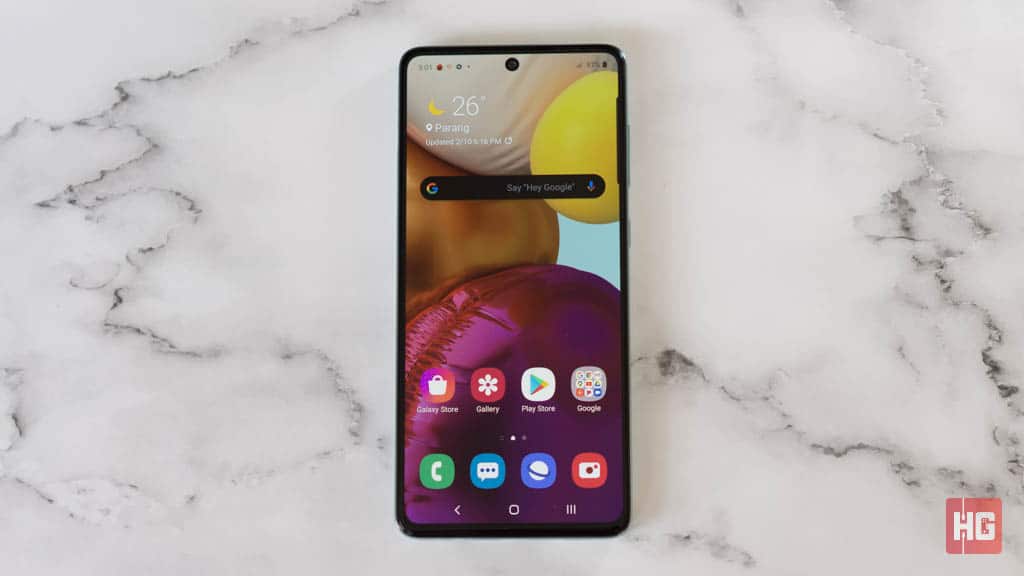
The front of the Samsung Galaxy A71 looks like a flagship based on how it was designed. The screen is a large 6.7-inch Infinity-O SuperAMOLED Plus display with a taller resolution of 2400 x 1080 with Corning Gorilla Glass 3 as well as an integrated fingerprint scanner.
Color reproduction of the 6.7-inch display is certainly its strongest point. Colors are well-saturated and punchy without being over-the-top. Though the screen is relatively large, the pixel density is enough to look high-resolution unless you’re eyes in 2 inches away from the display. Brightness is also a non-issue with the device having 100% usability even in direct sunlight.
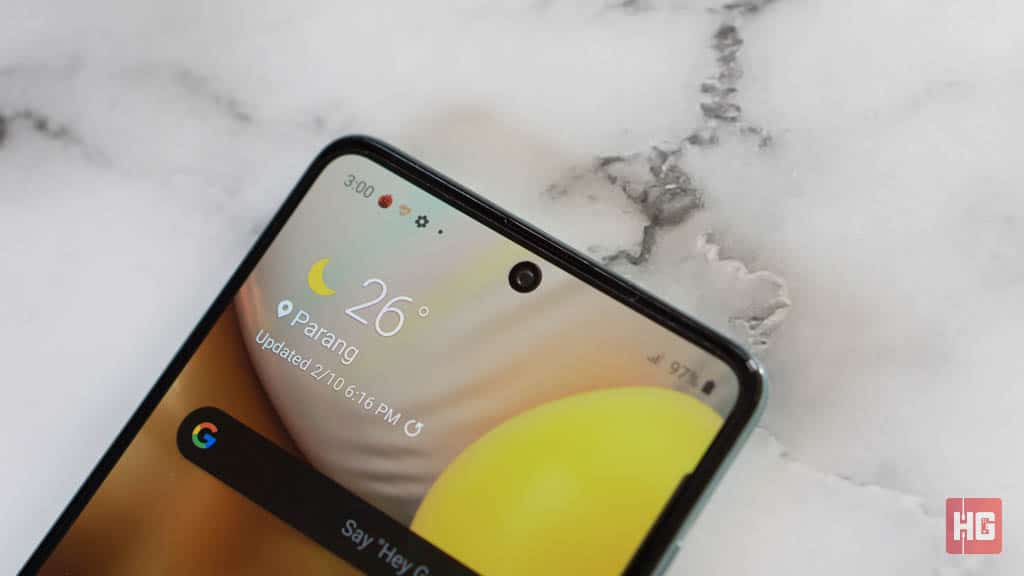
The uniform display is only broken by the punch-hole at the top housing its 32MP f/2.2 selfie camera. The experience is not as jarring as the dreaded notch we’ve come to expect on smartphones in the recent years. The punch-hole will only be really noticeable when watching in full-screen in brightly-lit scenes.

The back of the Samsung Galaxy A71 is definitely a sight to behold. Tiny lines intersect with each other to form a crisscross design near the bottom of the smartphone. The Prism Crush Blue has a tri-tone design that’s further accentuated by the rainbow effect when the smartphone is hit by a light source at an angle.
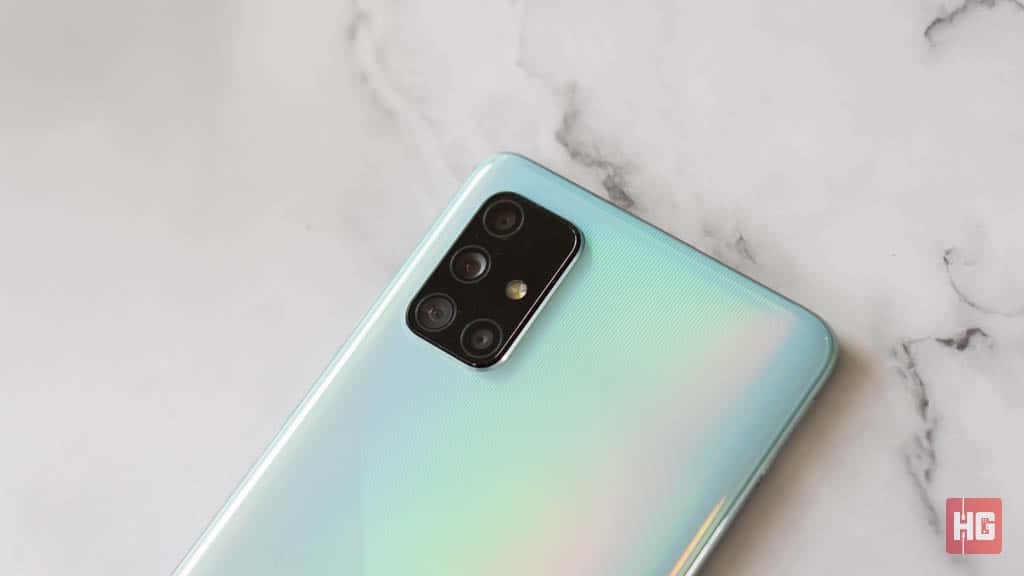
Leading the Samsung Galaxy A71 show are its quad cameras. Breaking up the linear lines at the top is a rather large camera bump that houses a 64MP f/1.8 Main, 12MP f/2.2 Ultrawide, 5MP f/2.4 Macro, and 5MP f/2.4 Depth cameras as well as an LED flash.
Samsung has placed the bottom rocker and power button of the Galaxy A71 at the right-hand side. The other side houses the triple-cut SIM tray that can accommodate two SIM cards and a MicroSD card at the same time.
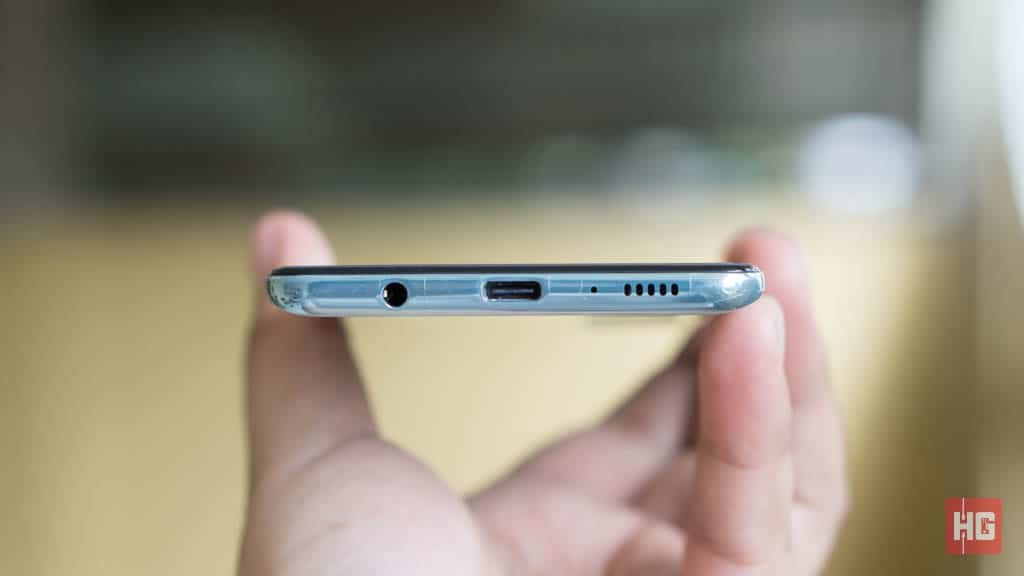
All the ports of the Galaxy A71 are located at the bottom. A USB Type-C port is available for charging and file transfers and just beside it is a grille for the microphone. Though it does share some of its design from Samsung flagships, the smartphone still comes with a 3.5mm audio jack for audiophiles.
In terms of design, the large 6.7-inch display as well as the unique color choice of the rear makes the Samsung Galaxy A71 stand apart from most of the mid-range competition. A refreshing design choice given the segment has been stagnating in the two-tone colorways of years past.
The Samsung Galaxy A71 ships out with Android 10 with Samsung’s One UI 2. Quite a few enhancements can be found over its previous iteration such as rounder application logos as well as a shortcut that can be accessed via the right-hand side of the device. The quick access panel can be customized with the apps you want and comes with a few tools such as compass, ruler, and flashlight.
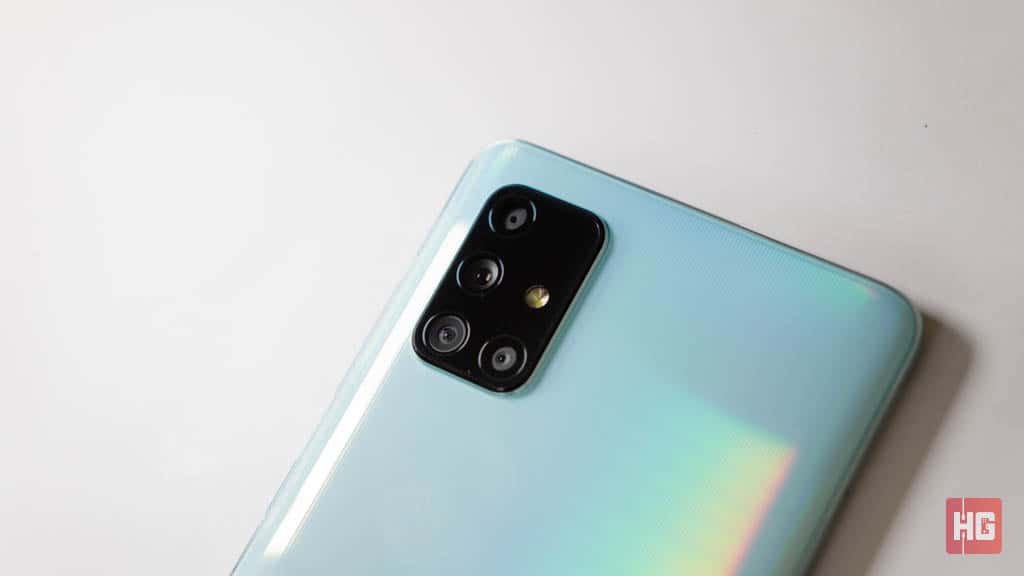
The camera app of the Samsung Galaxy A71 comes with a set of complementary set of options to help you capture the best photo. Aside from the standard Auto, Pro, Night, and Video modes, the smartphone has Panorama, Macro, Slow Motion, Super Slow Motion, Hyperlapse, and Food modes. In addition, Bixby Vision and AR Emoji is supported by the device.
Headlining the cameras of the Galaxy A71 is the 64MP f/1.8 Main shooter. The impressive pixel count is backed by excellent image quality. Photos taken by the main camera shows a stunning amount of detail even in low-light situations. Photos are soaking with color without being aggressive although there are times where some photos lack a bit of contrast.
Though not as impressive on paper as the main camera, the 12MP f/2.2 Ultrawide camera makes a decent showing on the Galaxy A71. The upped pixel count of 12MP from the usual 8MP that we find on mid-range smartphones certainly help capturing more detail. As an ultrawide lens, there is noticeable distortion on either sides of photos.

Taking photos with the 5MP f/2.4 Macro lens of the Galaxy A71 can be a joy so long as you can get close to your subject. Photos produced the lens are detailed at the center with a noticeable fall-off on the outer edges. Colors, however, can be a bit muted requiring a bit of tinkering in post-processing to get the color you want.

The 32MP f/2.2 Selfie camera peeking out of the smartphone’s punch-hole display takes natural-looking selfies. The skin is well-detailed while colors are saturated enough to be pleasant to the eyes.

Inside the Galaxy A71’s unique shell is a Qualcomm Snapdragon 730G chip with 8GB of RAM and an expandable 128GB of internal storage. Though it doesn’t have the Exynos heart of Samsung’s flagships, the Snapdragon 730G is still able to perform up to our expectations in our daily tasks.
Our daily grind composed of surfing the Internet, sending emails, and writing articles was handled by the Galaxy A71 like it was nothing. Multitasking is also handled without any problems thanks to plenty of RAM.
In terms of sheer performance, the Snapdragon 730G inside the Galaxy A71 delivered consistent framerates in Call of Duty Mobile. For benchmarks, the device pumped out decent numbers. It’s able to score 2,470 in 3DMark Sling Shot Extreme, 7,706 in PCMark Work 2.0, and 265,975 in AnTuTu.
Powering the Samsung Galaxy A71 is a 4,500mAh battery. With our day-to-day tasks, we were able to reach more than a day with the device with WiFi and occasional mobile data usage. Running PCMark Work 2.0 battery test with medium brightness and volume, the smartphone was able to last just more than 14 hours.

Charging is pretty straightforward thanks to the USB Type-C port at the bottom. A 4,500mAh battery can be a bit of a hassle to charge but thanks to a 25W Fast Charging unit, the wait is shortened to around an hour and a half to fully charge the smartphone.
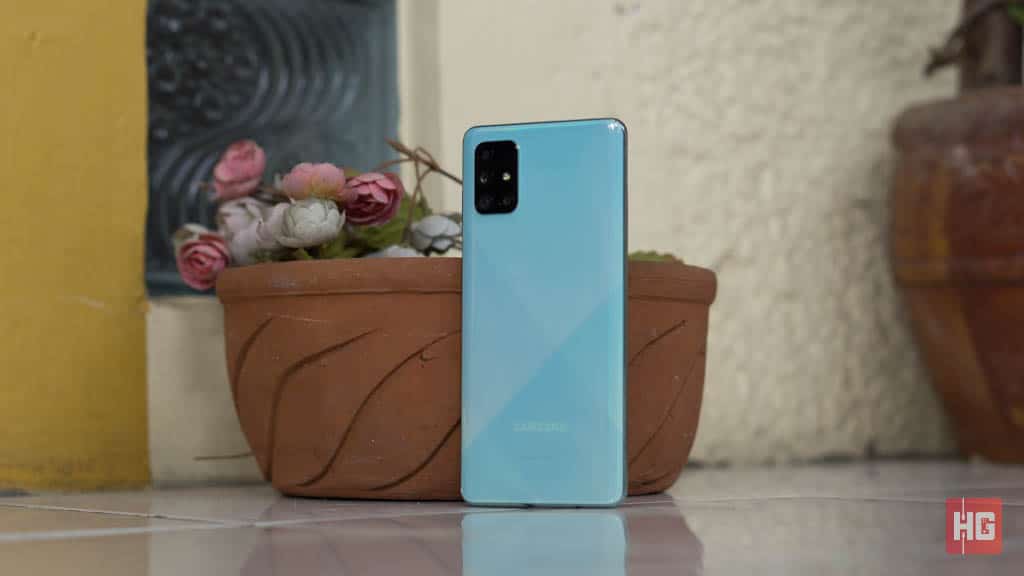
From the quality of all of its cameras to the top-notch performance of its chipset, the Samsung Galaxy offers a lot of performance to its user. Add to that a unique-looking design that’s sure to set you apart from others, the smartphone is looking like a contender for the mid-range crown.

This kind of performance, however, does not come without cost. Priced at PhP 22,290, the Samsung Galaxy A71 can be a bit expensive to be considered as a mid-range smartphone. The smartphone delivers a decent experience on all fronts so long as the price barrier isn’t an issue. This is why we’re giving the Samsung Galaxy A71 our Seal of Approval.
